Dave Harris, head teacher at Nottingham University Samworth Academy (NUSA), loves a good quotation. One of his favourites is from Glenn Doman, founder of the Institutes for the Achievement of Human Potential: "Learning is the greatest game in life and the most fun. All children are born believing this and will continue to believe this until we convince them that learning is very hard work and unpleasant. Some kids never really learn this lesson, and go through life believing that learning is fun and the only game worth playing. We have a name for such people. We call them geniuses."
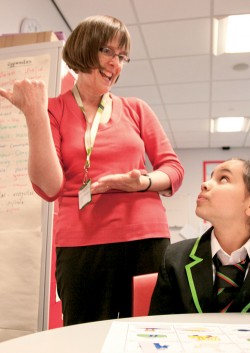
"I had letters from local people who said, 'why on earth are David Samworth and the university putting money into this? The kids are worthless; it's a waste of time.'" says Harris. "We had to transform it – we gave it a paint job, and ripped out the reception, putting in new doors and a proper, large desk. People thought we were mad, when we were only going to be there five minutes, but it was essential to let the kids know that things had changed. They used to bleed in and out of the site through side doors; I wanted them to understand that it was their school, and they could and should come in through the main entrance."
When the new building, raised in the shadow of the old, was finally finished, Harris and his students moved in, taking the seeds of a fresh, positive attitude with them, and the latter wearing smart new uniforms. The idea had been to create a place that was 'aspirational and inspirational, with lots of interesting spaces' – and that's just what happened. The NUSA building is a breathtaking piece of architecture, with a sleek, spacious reception area that would grace the headquarters of any major corporation; a bright, airy restaurant (not, insists Harris, a 'canteen'); wide corridors with colour-coded carpets to aid navigation between classrooms; high ceilings and expansive windows; and at its centre, 'the street' – a clear-roofed area for relaxing and socialising, with table tennis tables, communal seating, a wide bridge connecting the upper levels of the teaching blocks, and a 10ft banner displaying a poem composed by a Y11 pupil about the process of transformation from 'the jigsaw of mismatched concrete and the confetti of peeling paintwork' to 'a building confidence that we could be someone.' There are also sports halls, a dance studio, a multigym, an internet café, a recording studio, and a 300-seat, state-of-the-art lecture theatre. And everywhere, there are young people, many of whom are from harsh backgrounds and dealing with some pretty serious issues, finally able to play the learning game.
"I don't believe in doing things the typical way," insists Harris. And indeed, before he took on the headship of NUSA, he was responsible for developing Serlby Park, one of the UK's few all-through schools, educating 3-18 year olds across two sites in the former mining community of Bircotes, another area of socio-economic challenge. "I hate the way some – not all – of the large academy chains work with the concept that success can be canned," he continues, frowning. "That you can have a plan: move to an area, target in, and 'solve' this problem, forcing your ideas on the community. It's morally wrong. The drive for short-term results at the cost of long-term gain is just criminal. And I see it all the time. For me it's about growing, about the subtlety. It's like being a gardener – a good horticulturalist won't move to another garden and just replicate what he or she did in the last one. Because the ground is different, and so are the light, the climate, the shapes, and everything else. Being a head is just the same – you have to look at what you've got, and listen to the community, and then work out what's needed."
Inspired by the professional motto of their business sponsor Sir David Samworth: 'people, quality, profit', Harris and his team developed a similarly pithy, three-word summary of the ethos that drives NUSA: 'courtesy, courage, aspiration'. However, there's another word that, for Harris, is just as fundamental to what he is trying to achieve in this impressive, ultra-modern building, and that probably captures his personal approach to education more fully than any other: wonder. "I was stuck at the university during the planning stages," he explains, "and looking to form relationships. I met Matthew, and just thought, 'wow, what a guy'." 'Matthew' is Dr Matthew McFall, researcher in wonder and learning at Nottingham University and currently spending two days a week at NUSA as an 'Agent of Wonder'. He has a dedicated 'Wonder Room' in the building, but the spirit of curiosity and excitement it generates is encouraged and nurtured throughout the whole school, through temporary installations like mazes and an 'imaginarium', to the 'wonder trail' of 100 plaques fixed randomly along corridors and in classrooms, each one featuring an open-ended question to spark pupils' imaginations.
"Leading a school is as complex as living life," Harris concludes. "It is living life. There's not an easy answer. But the moment you accept there's an age limit on wonder, is the moment you start restricting kids from succeeding."
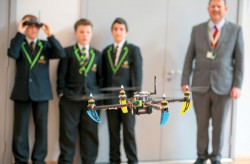
Box of delights
So, what is a 'Wonder Room', anyway? Dr Matthew McFall is an academic (and magician) whose fascination with puzzles and illusion began in boyhood and eventually led him to pursue a course of research into the very nature of wonder itself, and how it can be both generated, and used as a tool for learning. "I met Dave Harris at the university, he invited me over and gave me this room as a kind of living workshop," he explains, in between responding to queries, comments and occasionally quite profound observations from the Y7 students who are in the room with us when we visit. "The idea is to provide wonders for learning for everyone; pupils, staff and [he smiles, with more than a hint of Gene Wilder's Willy Wonka about him] visitors."
NUSA's Wonder Room is not a large space, by any means, yet it seems to have vaguely TARDIS-like properties – containing a seemingly limitless collection of fascinating items, and easily accommodating a dozen or so eager young adventurers, along with the hardly diminutive presence of the Agent of Wonder himself (with enough room left for a couple of photographers and an increasingly rapt journalist). Vintage typewriters, invitingly primed with ribbons and paper, share shelves in comfortable incongruity with rocks and twisted, glassy-smooth fragments of petrified wood; boxes of 3D puzzles; board games that pupils' grandparents might have played; leaf insects; a shark's tooth; a cod's skull; and far too many other wonders to mention. Objects nestle under tables and in drawers of all sizes, and hang from the walls and ceilings – all, as Dr McFall explains, 'arrayed for exploration', just as they would have been in the cabinets of curiosities of the 1500s on which the Wonder Room is loosely modelled.
Pupils are free to visit the Wonder Room at pretty much any time. "Sometimes sessions are booked in as part of a lesson," says its charismatic curator, "but more often than not, emergent things will happen during the spaces in between. I send things out, too," he adds. "Things in boxes, or mazes, or other forms. This room is a node, but ideas, as well as the physical items, should come and go from it. Wonder shouldn't be static, and we need to find ways of letting it move."
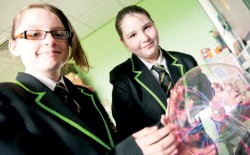


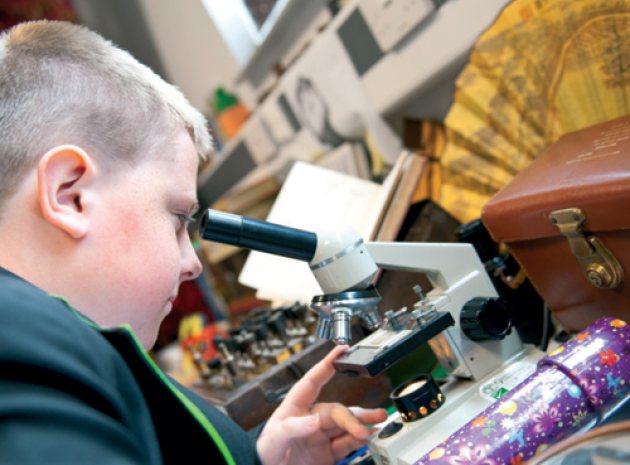



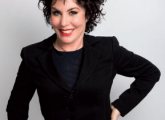



“For me it’s about growing, about the subtlety. It’s like being a gardener – a good horticulturalist won’t move to another garden and just replicate what he or she did in the last one.”